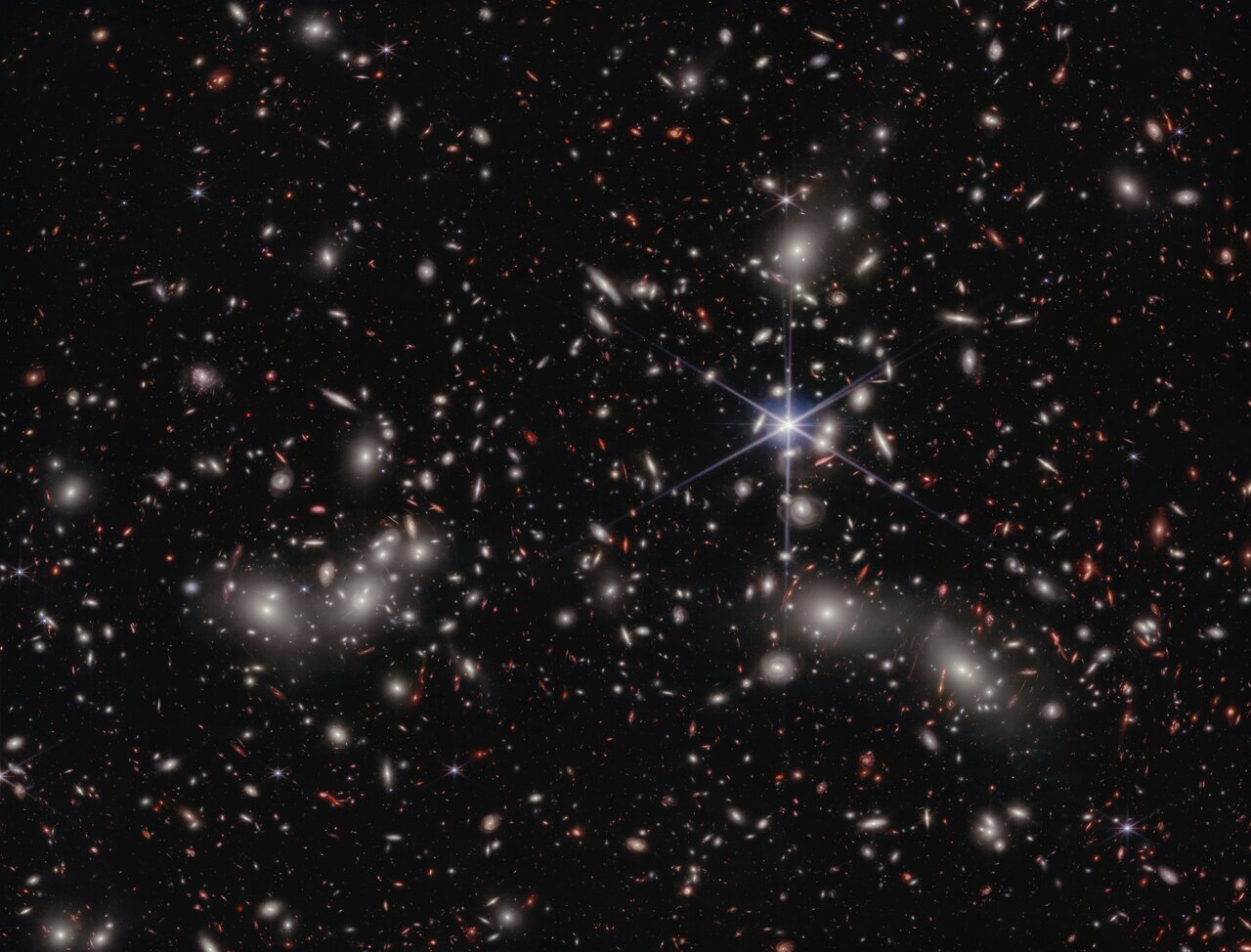During the Universe’s Dark Ages, dense primordial gas absorbed and scattered light, prohibiting it from travelling. Only when the first stars and galaxies began to shine in energetic UV light did the Epoch of Reionization begin. The powerful UV light shone through the Universe and punched holes in the gas, allowing light to travel freely.
New observations with the James Webb Space Telescope reveal how it happened. The telescope shows that faint dwarf galaxies brought an end to the darkness.
To reach back in time and answer fundamental questions about our Universe is the James Webb Space Telescope’s greatest gift. The powerful infrared space telescope has peered back into the earliest stages of the Universe’s life and shown astronomers the forces that shaped it. One of our biggest questions about the Universe concerns the Epoch of Reionization (EOR) that occurred several hundred million years after the Big Bang, ending the Universe’s Dark Ages.

Scientists have been uncertain about the source of light that caused the EOR. The primordial gas that blocked light from travelling prior to the EOR was hydrogen, and it comprised the Intergalactic Medium (IGM). Only higher-energy UV light can ionize hydrogen, so astronomers looked for sources of UV light. (Gamma rays and X-rays can too, but there weren’t enough sources to cause the EOR.) Candidates included Population III stars, the very first stars to form in the Universe. They were massive and luminous and could’ve provided the required UV light.
Quasars were another candidate because they emit so much light above the threshold needed to ionize hydrogen. But there weren’t enough of them to trigger the EOR. Massive galaxies were also a candidate, but astronomers think that they would’ve absorbed much of their own light.
Dwarf galaxies were also a candidate. In fact, they’ve been the prime candidate for a while because they’re small enough for their UV light to easily escape. They need to be what are called Lyman Continuum (LyC)-emitting galaxies. Lyman Continuum Photons have enough energy to ionize hydrogen, so astronomers searched for the LyC dwarf galaxies that emitted them. The Hubble found about 50 of them in 2022, and that helped build the framework for understanding how dwarf galaxies could be responsible for the EOR. But the 50 that Hubble found were local, not ancient.
But now we have the keen-eyed JWST and its piercing infrared gaze. It has the power to see the faintest infrared light from the ancient Universe. Even the powerful JWST needs help to see the very faint dwarf galaxies in the early Universe. Combined with the power of gravitational lensing, the space telescope was able to see some of the earliest galaxies. Among them were LyC dwarf galaxies, some of the faintest objects in the early Universe.
“This discovery unveils the crucial role played by ultra-faint galaxies in the early Universe’s evolution.”
Iryna Chemerynska, Institut d’Astrophysique de Paris in France.
These findings are in a new research article published in Nature titled “Most of the photons that reionized the Universe came from dwarf galaxies.” The lead author is Hakim Atek, an astronomer at the Institut d’Astrophysique de Paris, CNRS, Sorbonne Université, Paris.
Atek and his fellow researchers found eight ultra-faint dwarf galaxies in the early Universe. Contrary to previous thinking, these eight galaxies were prodigious emitters of ionizing Lyman Continuum radiation. Despite their apparent faintness, they emitted four times more ionizing radiation than previously thought. This helps cement their status as the objects responsible for the EOR.

“This discovery unveils the crucial role played by ultra-faint galaxies in the early Universe’s evolution,” said team member Iryna Chemerynska of the Institut d’Astrophysique de Paris in France. “They produce ionizing photons that transform neutral hydrogen into ionized plasma during cosmic reionization. It highlights the importance of understanding low-mass galaxies in shaping the Universe’s history.”
These dwarf galaxies were about 100 times less massive than the Milky Way. By using the JWST’s powerful spectroscopy, astronomers were able to examine the light from these small, faint galaxies in great detail. The team of researchers realized that if there were enough of these galaxies, they could be responsible for the EOR.
As each galaxy emitted ionizing radiation, it created a bubble of transparent hydrogen around them. These bubbles grew until they overlapped. Eventually, the hydrogen in the IGM was ionized, and light could travel freely. While other sources, like quasars and massive galaxies, could’ve created their own smaller bubbles of ionized hydrogen, it was the smaller bubbles that allowed the Universe to ionize more homogeneously. So, these dwarf galaxies made a large contribution to the architecture of the Universe.
“These cosmic powerhouses collectively emit more than enough energy to get the job done,” said lead author Hakim Atek. “Despite their tiny size, these low-mass galaxies are prolific producers of energetic radiation, and their abundance during this period is so substantial that their collective influence can transform the entire state of the Universe.”
In the current age, we’re only able to see other galaxies because of the reionization. Without it, we’d be surrounded by opaque atomic hydrogen. So, discovering what made the galaxy transparent helps explain the Universe we find ourselves in today.
Scientists aren’t done with this type of observation yet. While these researchers found eight dwarf galaxies that can help explain the EOR, a more comprehensive picture of their population is needed to firmly establish them as the primary cause of the EOR. An upcoming JWST observing program called GLIMPSE will study dwarf galaxies in the early Universe using the JWST and gravitational lensing. Astronomers want to know how prevalent these early dwarf galaxies are so that they can further constrain their contribution to the EOR.

